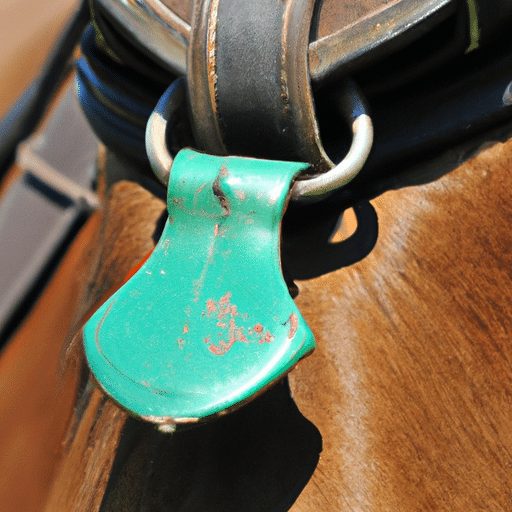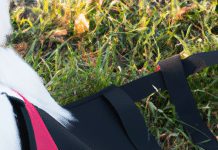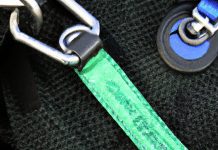Have you ever wondered about the difference between a harness and a halter? Well, fear not, because we’re here to provide you with the answers! Both harnesses and halters are commonly used to control and guide animals, but they serve different purposes and are designed differently. In this article, we’ll explore the distinct features and functions of harnesses and halters, so you can better understand which one is best suited for your furry friend. So, let’s strap in and get ready to explore the exciting world of equine gear!
Basic Function
Table of Contents
Harness
A harness is a type of equipment designed to be worn by animals, typically dogs, to give owners greater control and support during various activities. It consists of straps that are secured around the animal’s body to distribute the force evenly, preventing strain on the neck and throat. Harnesses come in various styles, including front-clip, back-clip, and no-pull harnesses, each serving a specific purpose.
Halter
On the other hand, a halter is a type of headgear used to control horses and other large animals. It is composed of a strap that encircles the animal’s head, with another strap connected under the chin. The purpose of a halter is to control and guide the animal’s movement by exerting pressure on different parts of the head, such as the nose and jaw.
Design
Harness
Harnesses are designed with both functionality and fashion in mind. They are available in a wide range of materials, including nylon, leather, and mesh, catering to different preferences and needs. Many harnesses have adjustable straps to ensure a secure and comfortable fit for the animal. Additionally, harnesses often feature padding or mesh panels to increase comfort and prevent chafing during prolonged use.
Halter
Halters are primarily utilitarian in design, focusing on simplicity and durability. They are commonly made of sturdy materials like nylon or leather, capable of withstanding the strength of large animals. Halters also have adjustable straps to accommodate different head sizes and shapes. While aesthetics are not a significant factor in halter design, some owners may opt for halters with simple patterns or color variations.
Usage
Harness
Harnesses are versatile tools ideal for a variety of activities. They are commonly used during walks, hikes, and runs, providing better control and reducing the risk of injury. Harnesses are particularly useful for dogs that tend to pull or lunge, as they distribute the force across the body and discourage pulling behavior. Moreover, harnesses can be utilized for training purposes, guiding dogs through obedience exercises and teaching commands.
Halter
Halters are predominantly used in equestrian activities, such as handling horses, leading them, or tying them securely. They are an essential tool in daily horse care, providing control and facilitating grooming, veterinary procedures, and farrier work. Halters are also employed during groundwork training, allowing trainers to establish a line of communication and develop trust with the horse. However, halters should not be left on unattended horses, as they may become entangled or cause discomfort.
Support and Control
Harness
Harnesses offer superior support and control compared to traditional collar-based systems. By distributing the pulling force across the chest and back, harnesses reduce strain on the neck and throat, which can be especially beneficial for dogs with respiratory issues or prone to pulling. The back-clip design of some harnesses also provides better steering control, allowing owners to guide their dogs effortlessly during walks or recall exercises.
Halter
Halters provide effective control over large animals like horses, allowing handlers to steer, stop, and direct their movements. By exerting pressure on specific areas of the head, such as the nose and jaw, halters encourage the animal to respond to commands and cues. This level of control is crucial during activities that require precision, such as dressage or showmanship. Halters also serve as a helpful tool for ground training, enabling trainers to establish boundaries and reinforce desired behavior.
Adjustability
Harness
Harnesses commonly feature adjustable straps to ensure a proper fit for different breeds and sizes of animals. The ability to adjust the harness allows owners to achieve an optimal balance between comfort and control. It is important to measure the animal’s chest and neck circumference accurately to select the right size harness and make necessary adjustments. Additionally, some harnesses offer multiple points of adjustment, ensuring a customized fit for individual animals with varying proportions.
Halter
Halters are generally adjustable to accommodate different head sizes and shapes. With adjustable straps, handlers can modify the fit to suit each horse’s unique features, such as the width of the jaw or the length of the nose. Proper adjustment ensures that the halter remains secure while providing sufficient control, enabling effective communication between the handler and the horse. However, it is essential to regularly check and readjust the halter to maintain a proper fit as the animal grows or changes physically.
Comfort
Harness
Harnesses prioritize the comfort of animals during various activities. Many harnesses are designed with ergonomic principles in mind, aiming to minimize discomfort and chafing. Padded harnesses reduce pressure points and distribute weight more evenly, preventing rubbing or digging into the skin. Mesh panels increase breathability, particularly in warmer climates, ensuring that the animal remains cool and comfortable during physical exertion. Proper sizing and fit adjustment also contribute to overall comfort, allowing animals to move freely without restriction.
Halter
While comfort is not the primary focus of halter design, it is important to ensure that the halter does not cause unnecessary discomfort or pain to the horse. The fit of the halter should be snug enough to prevent slipping but not excessively tight to avoid excessive pressure or chafing. Some halters feature padding at pressure points, such as the noseband or crownpiece, to enhance comfort. Handlers should regularly check the halter for wear and tear, as damaged halters can cause discomfort or compromise safety.
Training
Harness
Harnesses can be valuable tools in dog training. Their design allows for better control and communication between the owner and the dog. Harnesses with front-clip attachments discourage pulling behavior by redirecting the dog’s forward motion to the side, promoting loose-leash walking. Back-clip harnesses can be beneficial for training exercises that require dogs to have more freedom of movement. However, it is important to reinforce positive behavior and use the harness as a training aid rather than relying solely on its functionality.
Halter
Halters are commonly utilized in groundwork training for horses. They provide handlers with a means to communicate with the horse through gentle pressure and release. With the guidance of a skilled trainer, horses can learn to respond to specific cues given through the halter, reinforcing obedience and respect. Groundwork training using halters lays the foundation for more advanced riding and performance training. It is important to note that halters should not be used for excessive or forceful control, as this can lead to negative experiences and resistance from the horse.
Safety
Harness
Harnesses prioritize the safety of animals, particularly during activities that involve pulling or sudden movements. By distributing the force over a larger area of the body, harnesses alleviate strain on the neck and throat, minimizing the risk of injury. Additionally, harnesses with reflective materials or built-in LED lights enhance visibility during low-light conditions, ensuring the safety of both the animal and the owner. However, it is crucial to regularly inspect the harness for signs of wear and tear, replacing it when necessary to maintain its functionality and integrity.
Halter
Halters are generally safe when used correctly and under proper supervision. However, it is important to ensure that halters are not left on unattended horses, as they can easily become caught on objects or cause discomfort. Correct fitting of the halter is essential to avoid pressure points or slip-offs that may result in injuries. Training and handling horses using halters should be done by experienced individuals to avoid accidents or unintended harm. Maintaining the halter’s condition and replacing it when damaged is crucial for ensuring continued safety during handling and control of horses.
Intended Use
Harness
Harnesses are primarily intended for use with dogs, providing control and support during a range of activities. They are suitable for both small and large breeds and can be particularly beneficial for dogs with neck or respiratory issues. Harnesses serve as an alternative to traditional collar-based systems, offering a more comfortable and secure option for owners who prioritize their dog’s welfare. While harnesses can be utilized for training purposes, their primary function is to enhance control and reduce strain during walks, runs, and other physical activities.
Halter
Halters are specifically designed for use with large animals, primarily horses. They are essential gear for handling, leading, and tying horses securely. Halters are integral to daily horse care and provide a means of control and communication between the handler and the horse. While halters can be used during groundwork training to establish boundaries and obedience, they are not intended for extended periods of use or for riding purposes. Halters should always be used under appropriate supervision and by individuals with the necessary knowledge and experience in handling large animals.
Common Applications
Harness
Harnesses have a wide range of applications in the world of dog ownership. They are commonly used for walking, hiking, and jogging, providing owners with better control and reducing strain on the dog’s neck. Harnesses with specific features, such as front-clip designs or no-pull attachments, are effective in managing dogs that tend to pull during walks. Harnesses can also be utilized for obedience training, allowing owners to guide and control their dogs through various commands and exercises. Additionally, harnesses can facilitate the use of dog backpacks or provide assistance for dogs with mobility issues.
Halter
Halters are integral to every aspect of horse care and handling. They are used for leading and guiding horses, ensuring their safety and responsiveness to commands. Halters are also employed during grooming sessions, veterinary procedures, and farrier work, allowing easy restraint and control. In groundwork training, halters provide a means of communication between the handler and the horse, establishing boundaries and teaching respect. While halters are not intended for riding purposes, they play a vital role in preparing horses for saddle work, teaching them to respond to cues and commands before the addition of a bit and bridle.






























